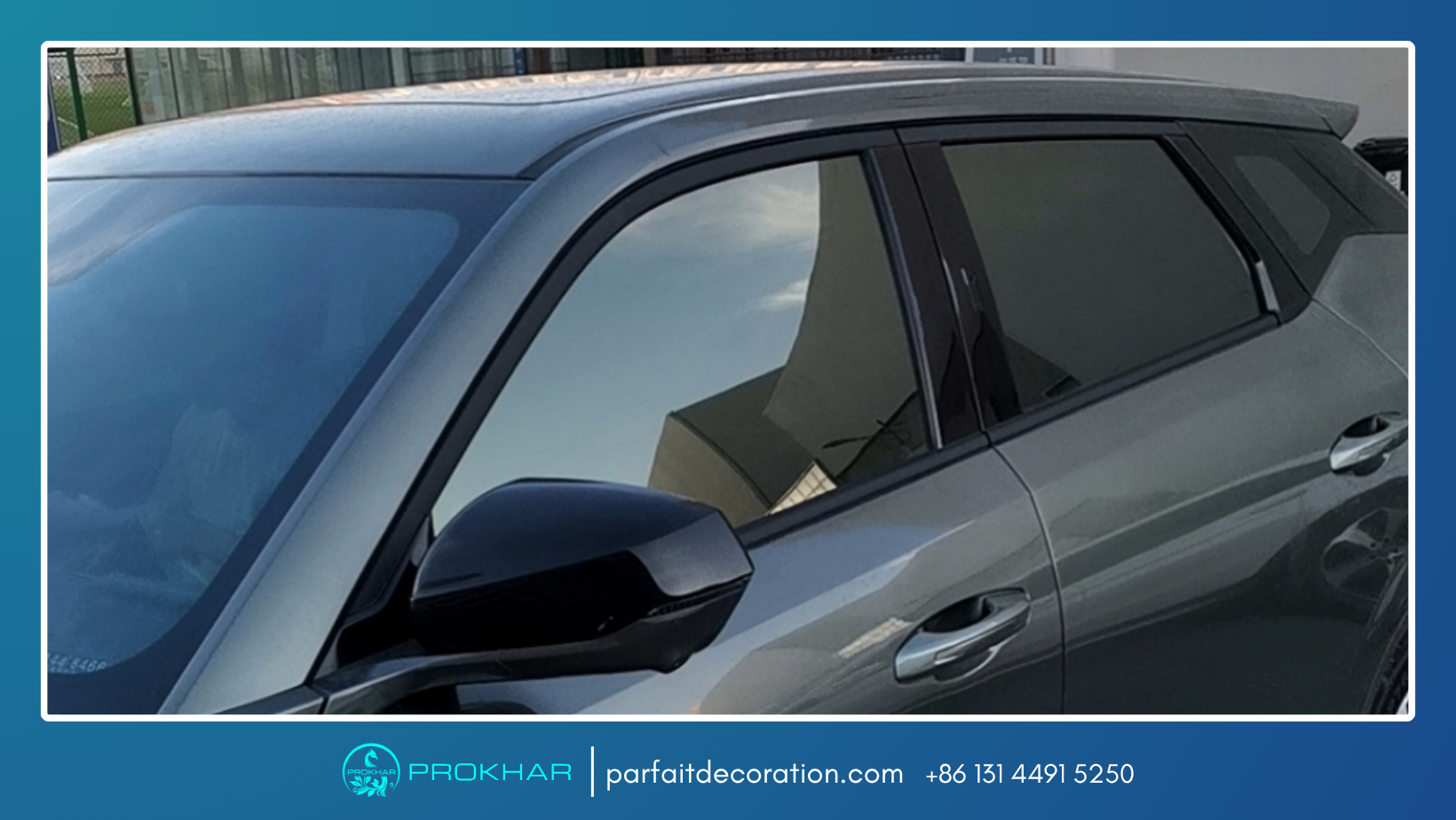
How To Choose The Right Tint Percentage (VLT)
Choosing the optimal Visible Light Transmission (VLT) for your car windows is crucial for comfort, safety, and style. With so many options for car window tint and car tinting on the market, it’s easy to feel overwhelmed. In this guide, we’ll break down the key factors—legal regulations, climate, privacy needs, and performance specifications—to help you select the right car window film percentage for your drive.
1. What Is VLT and Why It Matters
Visible Light Transmission (VLT) measures the percentage of light that passes through your car window film. A lower VLT number means darker glass, while a higher number allows more light in. Understanding VLT is the foundation of any car tinting decision:
High VLT (50–70%): Allows more daylight, enhancing night visibility and reducing eye strain.
Medium VLT (30–50%): Balances glare reduction with adequate visibility.
Low VLT (5–30%): Maximizes privacy and heat rejection but may reduce visibility in low-light conditions.
By grasping VLT basics, you can match your driving environment—urban commuting, highway travel, or off-road adventures—to the ideal car window film choice.
2. Legal Regulations and Compliance
Before browsing for “Best Window Tinting Near Me,” it’s vital to understand local laws governing car tinting. Regulations vary by region and often specify maximum darkness levels for front side, rear side, and back windows.
Front Side Windows: Many jurisdictions require at least 50% VLT to ensure officer and pedestrian safety.
Rear Side & Back Windows: Often allow darker films, sometimes as low as 5% VLT.
Windshield Tint: Limited to a narrow strip at the top (typically 6 inches) unless manufacturer-installed film is transparent.
Failing to comply with regulations can result in fines, mandatory tint removal, and safety hazards. Always verify legal limits before scheduling installation with a “Best Window Tinting Near Me” provider.
3. Climate Considerations: Heat Rejection and UV Protection
Your local weather patterns play a significant role in the performance of car window tint:
Hot Climates: Opt for low VLT films (5–30%) with high infrared rejection to keep cabin temperatures down and reduce air-conditioning load.
Cold Climates: Choose a moderate VLT (30–50%) to allow natural warmth from sunlight, which can supplement your heating system.
In both scenarios, look for films that block at least 99% of harmful UV rays. Modern ceramic and carbon-based car window film options combine superior UV protection with minimal signal interference for in-car electronics.
4. Driving Habits and Visibility Needs
Your driving style and schedule determine how dark your tint should be:
Daytime Drivers: If you primarily drive during daylight hours, a medium VLT (35–50%) reduces glare while preserving clear sightlines.
Nighttime Commuters: A higher VLT (50–70%) maintains visibility in low-light conditions and minimizes eye fatigue.
Off-Road Enthusiasts: Darker tints (5–30%) protect against branches and debris, but ensure visibility is never compromised on technical trails.
Consider how often you’ll encounter tunnels, poorly lit roads, or adverse weather. The right car window tint level ensures comfort and safety across diverse driving scenarios.
5. Privacy and Aesthetic Preferences
Many choose darker car window tint for privacy, security, and a sleek appearance. But darker is not always better.
Security: Low VLT (5–20%) conceals valuables from prying eyes but may attract law enforcement scrutiny if outside legal limits.
Aesthetics: Uniform film shades contribute to a cohesive look. High-quality car tinting services offer color-stable films that resist fading and bubbling.
Balance: If you want a premium finish without sacrificing visibility, consider mid-range VLTs (20–40%) or dual-layer ceramic films for a matte or glossy aesthetic.
When searching “Where To Buy Car Window Tint Film,” compare samples under natural light to preview how each shade complements your vehicle’s color and design.
6. Film Technology: Comparing Materials
Not all car window films are created equal. The material you choose influences performance, longevity, and cost:
| Film Type | VLT Range | UV Rejection | Heat Rejection | Price Range |
|---|---|---|---|---|
| Dyed | 5–70% | ~50% | ~10% | Low |
| Metalized | 5–50% | ~99% | ~40% | Mid |
| Ceramic | 5–70% | ~99.9% | ~50%+ | High |
| Carbon | 5–50% | ~99% | ~20–30% | Mid–High |
Dyed Films: Budget-friendly but prone to fading.
Metalized Films: Better heat rejection but may interfere with GPS and radio signals.
Ceramic Films: Premium performance in UV and heat blocking, with no signal interference.
Carbon Films: Good aesthetics and UV protection, with moderate heat rejection.
Match film technology to your priorities—whether it’s cost, performance, or durability—when you decide on a car window film purchase.
7. Installation Quality and Warranty
Even the best film underperforms if poorly installed. Look for certified installers with strong reputations when you search for “Best Window Tinting Near Me.” Key factors:
Installation Environment: A dust-free, indoor area ensures a smooth, bubble-free application.
Installer Certification: Affiliations with organizations like the International Window Film Association (IWFA) indicate professional standards.
Warranty Coverage: Opt for a film with lifetime or multi-year warranties against peeling, bubbling, and discoloration.
Ask potential installers for before-and-after photos of past projects. Reading customer reviews can also highlight consistency in service and satisfaction.
8. Budget Planning and Long-Term Value
Tinting costs vary widely based on film type, vehicle size, and region. Approximate price ranges for a four-door sedan:
Dyed Film: $100–$200
Metalized Film: $150–$300
Carbon Film: $200–$400
Ceramic Film: $300–$600
While ceramic films carry the highest upfront cost, their superior heat rejection and longevity often translate to energy savings and fewer replacements. Factor in long-term comfort, UV protection, and potential resale value enhancement when budgeting for car tinting.
Get A Free Quote
Selecting the right VLT for your vehicle involves balancing legal requirements, climate conditions, driving habits, and budget. Remember:
Understand VLT Ranges for your specific driving environment.
Verify Local Tinting Laws to avoid fines and ensure compliance.
Choose Quality Film and Installation for performance and durability.
Ready to upgrade your ride? Looking for professional installation? Click here to find the Best Window Tinting and get a free quote today!

